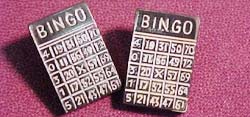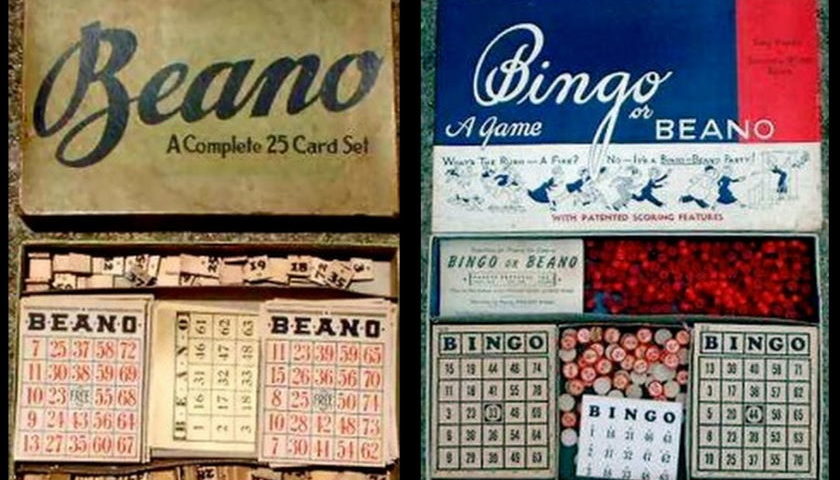Did you know? Bingo originates from the 16th century Italian game “Lo Giuco de Lotto”!
Bingo From Italy to France
The first version of Bingo was a 16th century Italian lottery game called Lo Giuco de Lotto. But the game we know today dates back to 18th century France, when cards, tokens and number calling were introduced.
From France, Bingo spread throughout Europe, and eventually made its way to North America in the 1920s. In the United States, Bingo quickly became a popular fundraising game for churches and charitable organizations, and soon evolved into a mainstream game played in bingo halls and casinos.
In Italy, Bingo is known as “Tombola” and is a popular family game played during the Christmas holidays. The game is similar to Bingo, but uses a deck of playing cards with numbers on them instead of balls. Each player has a card with a grid of numbers, and players mark off the numbers as they are called. The first player to mark off all the numbers on their card wins the game.
In France, Bingo is called “Le Lotto” and is still played today as a family game. The French version of the game uses a card with three rows and nine columns, and each row contains five numbers and four blank spaces. The caller randomly selects numbers from a pool of 90 balls and calls them out, and players mark off the numbers on their cards as they are called. The first player to mark off all the numbers in a row wins the game.
Today, Bingo is enjoyed by millions of people all over the world, both online and in person. The game has evolved over the years, with new variations and formats introduced to keep the game fresh and exciting. From its humble origins in Italy and France, Bingo has become a beloved game that brings people together and provides hours of entertainment.
American Bingo – The International Bingo
The original game included numbers 1-90 and still does in many countries. The US game (and most of the online games) have only 1-75.
Bingo was popularised in the US by a man named Edwin Lowe who introduced the game to New York and charged game organisers $1 a year to use the idea and name of Bingo.

Edwin Lowe employed a maths professor to come up with 6000 unique Bingo cards. Rumour has it the poor soul was driven clinically insane completing the task!
In the United States, Bingo is a popular game played in churches, community centers, and casinos. The game has a long and storied history in the US, dating back to the early 20th century.
As mentioned, the US version of Bingo uses a card with 25 squares, arranged in a 5×5 grid. The squares contain numbers from 1 to 75, and the center square is usually marked “FREE”. The caller randomly selects numbers from a pool of 75 balls and calls them out, and players mark off the numbers on their cards as they are called. The first player to mark off all the numbers in a row, column, or diagonal wins the game.
Bingo in the US has evolved over the years, with new variations and formats introduced to keep the game interesting. Some popular variations include blackout bingo, where players must mark off all the numbers on their card to win, and speed bingo, where numbers are called out quickly and players must mark off their cards as fast as possible.
One interesting aspect of American Bingo is the role it plays in fundraising for charitable organizations. Bingo games are often held as fundraisers, with proceeds going to support local charities and causes. This tradition has been a part of American culture for many years, and has helped to make Bingo a beloved game in the US and around the world.
Overall, Bingo has become an international game enjoyed by millions of people of all ages and backgrounds. While the rules and formats may vary from country to country, the spirit of the game remains the same: to have fun and enjoy the thrill of the chase as you mark off numbers and hope for a win.
Bingo or Beano?
The game should by rights be called ‘Beano’! Players used to use dried beans as tokens to cover the numbers on their cards and called ‘Beano!’ when they won. The name Bingo took over simply because Edwin Lowe had a friend who mistakenly called ‘Bingo’ instead of Beano whilst she was learning how to play.
In Australia the game was first called ‘Housie Housie’, with players calling ‘House!’ for a win.
In the 1930’s Bingo was often played in US movie theatres during the intervals.
Bingo spread from New York throughout the US during the 1930’s & 40’s, but wasn’t legalised anywhere until the 1950’s. The first states to legalise Bingo were New York and New Jersey.
The popularity of Bingo continued to grow throughout the US, and by the 1960s it had become a regular feature in community centres, churches and retirement homes. It was seen as a fun and social way to raise money for charitable causes.
In the UK, Bingo became popular in the 1960s and 70s, with Bingo halls popping up all over the country. It was seen as a way to escape the monotony of everyday life and have some fun with friends.
Today, Bingo remains a popular pastime all over the world, with online Bingo making it more accessible than ever before. The game has evolved over time, with different variations and styles of play, but the basic principles remain the same – marking off numbers on a card and calling out when you have a winning combination.
Whether you call it Beano, Housie Housie, or Bingo, the game has become a cultural phenomenon that brings people together for a fun and exciting experience.
From Wooden Bingo Cards to Online Bingo
The numbers have been drawn in various ways over the years: wooden tokens drawn from a bag, balls drawn from a bin, ping-pong balls blown through a tube. Nowadays the big commercial Bingo companies use computerised random number generators and show the numbers on computer screens.
The first online bingo sites appeared on the net in the mid 1990’s. Two of the oldest and biggest are: Cyber Bingo – operating since 1996 – and iBingo – online since 1998.
The rise of online bingo has revolutionized the game, allowing players to enjoy it from the comfort of their own homes. Instead of having to visit a physical bingo hall, players can now simply log on to their favorite bingo site and start playing.
Online bingo offers a variety of benefits, including the convenience of playing whenever and wherever you want, as well as access to a wider range of games and bigger jackpots. Players can choose from traditional 90-ball bingo, 75-ball bingo, and other variations, and chat with other players in real-time via the bingo chat rooms.
In addition to traditional bingo games, many online bingo sites offer a variety of side games such as slots, scratch cards, and other instant-win games. These games can be played alongside bingo, providing players with even more opportunities to win big.
As technology has advanced, online bingo has become more accessible than ever, with many bingo sites now offering mobile apps that can be downloaded onto smartphones and tablets. This allows players to enjoy their favorite bingo games on the go, no matter where they are.
Overall, the move from wooden bingo cards to online bingo has opened up the game to a wider audience, making it easier and more convenient to play than ever before. With bigger jackpots, more games, and the ability to play from anywhere, online bingo looks set to continue growing in popularity for years to come.

